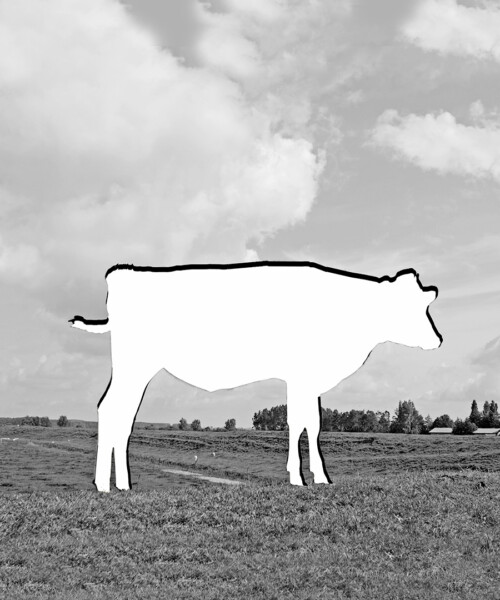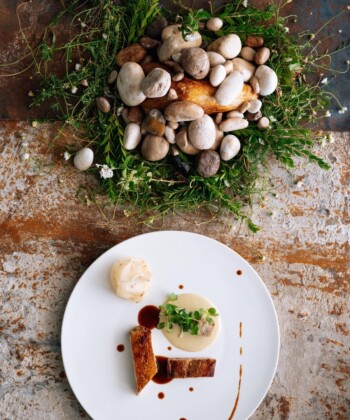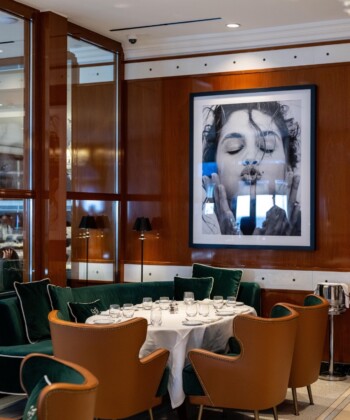It seems like every time you go out to a nice dinner these days, there’s an egg on your plate. You’ll find them on pizza. On pasta. On sandwiches after noon. On steak. Sometimes, it’s from a brand name chicken: Niman Ranch or Spruce Farms. And sometimes, god help us all, it’s from a quail.
What’s going on? The farm-to-table movement is everywhere, marked by buzzy phrases like “local sourcing,” “culling the harvest,” “respecting the protein” and “honoring the farmer.” At first glance, this is certainly a nice, even noble idea: Chefs have been the celebrities long enough, so why not salute the cute guy (or girl) in the overalls or the butcher’s apron doing the heavy lifting?
But the farm fad has spread like wildfire, as chefs coping with a downturn realize that sustainable foods can be sold for a premium. And by now, hasn’t it all gotten just a little bit…ridiculous?
Consider this description, from the foodie news site eater, of trendsetter Jean-Georges Vongerichten’s ABC Kitchen in New York, one of the eateries that started it all: “Market-driven foods, 100 percent recycled paper menus, thrifted staff uniforms”—who knew thrifted was a verb?—“locally designed ceramic dishware, barnyard wooden beams.” We ate it all up: it won restaurant of the year in 2010. (By the way, the food was great, too.)
Suddenly, there was a gastronomical fetish for serving odious pieces of the animal and calling them delectable. Actually, offal is gelatinous, funny-looking and tastes like hooves, especially if it is. But if you’re not a fan, you’re seen as ignorant, uninformed, even anti-farmer. This is all about politicizing the p0lenta. If you don’t want to know how the sausage is made, too bad—your server is going to tell you.
Taking butcher/farmer to the extreme, superstar Danish chef René Redzepi has broken down animals tableside in the dining room and even served ants as a garnish. This got him the cover of Time magazine, instead of a timely intervention by the people who love him. “We cook our landscape,” he told me at the launch of his cookbook.
Like Monet, capturing the light of the sun by the seine on a single afternoon, he said, “the food we serve could only happen right now, on that day.” So much for leftovers.
The age of farm-to-table has also brought with it an oversharing of vegetables and crazily detailed menus. As much as she applauds the movement, Susan Ungaro, president of the James Beard Foundation, who sees trends come and go, says “everyone’s jumping on the bandwagon, listing where menu items are from.” Menus, she adds, are getting to be “longer than the Constitution.”
After a while, some diners started to notice that “grass-fed beef has a certain flavor—gamy,” unlike the grain-fed kind, says Tim Graham, chef of Chicago’s Paris Club, who also opened Travelle in the Langham hotel last year. now, he says, people are looking for a return to luxury, but a certain kind of luxury. “No rigor. People don’t want to feel like they’re someplace they don’t belong.” For the chef’s table at Travelle, Graham, eager to serve serious food in a light way, came up with a playful menu mimicking a cruise ship’s ports of call along the mediterranean. “There are no menu items longer than a paragraph,” he promises. As far as buzzwords go, “authentic” is the new “sustainable.”
Noted Italian chef and Food network star Giada de Laurentiis opened her first restaurant, a nearly 300-seat eatery, in Las Vegas’ new Cromwell hotel this summer. She features no farmers on her menu, instead calling out family members’ favorites and naming cocktails for her producer grandfather. Her concept isn’t quite fancy food but “dinner and a show, with the restaurant being the show.” Guests take a tour of the place, see many of the dishes they could order being cooked, and can check out others on iPads. The trend now, she says, is “accessible food, elevated.” And, “we’re really busy,” she adds.
It’s not quite a return to the good old days. The most luxurious launch in recent memory—Villard Michel Richard at the Palace Hotel—was pilloried for its excess. But perhaps it was just ahead of its time. now, the shift in tastes is coming from the chefs themselves—why go to school for 10 years and carve up hundreds of potatoes just to put an egg on spaghetti? Especially once everyone else is doing it.
At this fall’s New York Wine and Food Festival, a veritable convention of tasting trendspotters, there are seminars on fois gras, going “Beyond the Butcher Block” and, yes, the French bistro. Celebrity chef Jose Garces this spring opened bar volver in Philadelphia, a caviar and champagne lounge. The cheapest caviar order—American Sturgeon—starts at $65, climbing to $190 for Ossetra. And Daniel Boulud, who ferrets out trends like a pig sniffs out truffles, cancelled plans to open a satellite of his sausage-fest eatery DBGB in Las Vegas. Instead, he subbed in a mash-up that includes elements of his swanky DB Brasserie. So, flip the egg. It’s done. About time.










































